Museums & Institutions
Revealed: Who Bought This Long-Lost Anne Vallayer-Coster Masterpiece?
The acquisition is part of efforts to collect more works by women, including Liza Lou and Simone Leigh.

The acquisition is part of efforts to collect more works by women, including Liza Lou and Simone Leigh.

Sarah Cascone

In June, Christie’s Paris set a new auction record for Anne Vallayer-Coster (1744–1818), with the €2.58 million ($2.8 million) sale of the 1783 canvas Nature morte au vase d’albâtre rempli de fleurs avec sur une table plusieurs espèces de fruits, comme ananas, pêches et raisins (Still Life With Flowers in an Alabaster Vase and Fruit).
Now, the National Gallery of Art in Washington, D.C., has revealed itself as the buyer, acquiring its first work by the French still life painter. (News that the NGA was the winning bidder first surfaced in La Tribune del Arte in June, but was not confirmed by the museum until now.)
The purchase is part of the institution’s ongoing efforts to increase its selection of work by female-identifying artists, both historic and contemporary.
“One of our top priorities is to acquire significant works by important women artists across time, which includes BIPOC, LGBTQ+ and women-identifying artists,” E. Carmen Ramos, the museum’s chief curatorial and conservation officer, wrote in an email.
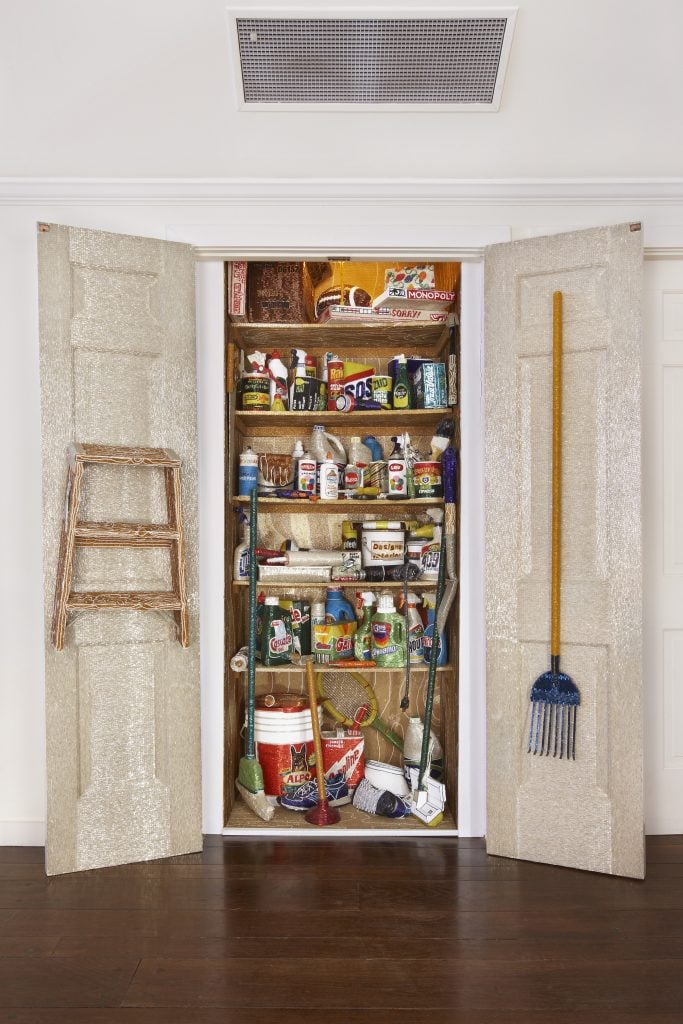
Liza Lou, Closet (1997–98). Collection of the National Gallery of Art, Washington, D.C. Gift of Sherry and Joel Mallin.
The Vallayer-Coster isn’t the only acquisition that the museum has just announced: it is also adding to its holdings Closet (1997–98) by Liza Lou. Donated by collectors Joel and Sherry Mallin, for whom the artist originally made the work, the piece recreates their utility closet in glittering colored beadwork. (Lou collected their empty cleaning supplies over a year-long period to make it.)
It’s one of five beaded sculptural installations the U.S. artist made in the 1990s. Lou embraced and elevated a practice traditionally relegated to the realm of “women’s work,” lending each piece a feminist edge.
Lou is best known for her monumental beaded installation Kitchen (1991–96), which debuted at New York’s New Museum in 1996 and has belonged to the city’s Whitney Museum of American Art since 2008. Another large-scale, labor-intensive beadwork piece from the period, Trailer (1998–2000), joined the collection of the Brooklyn Museum last year, also courtesy of the Mallins.
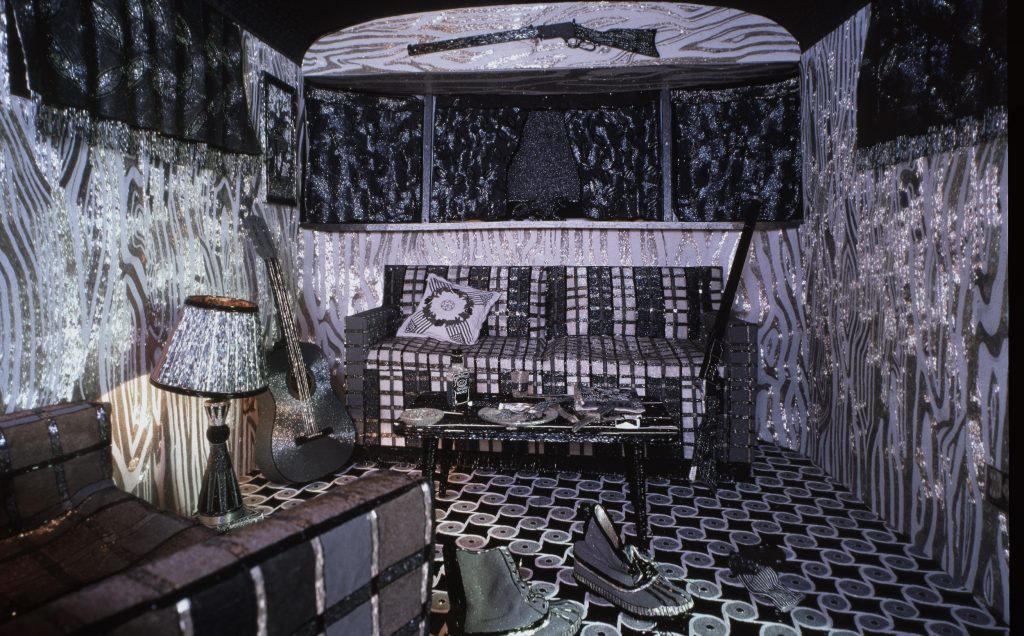
Liza Lou, Trailer (1998–2000), detail. Collection of the Brooklyn Museum, gift of Sherry and Joel Mallin, © Liza Lou. Photo by Tom Powell Imaging, photo courtesy of the Brooklyn Museum.
Vallayer-Coster, meanwhile, was only the second woman ever admitted to France’s Royal Academy (or Académie royale de peinture et de sculpture). The NGA actually hosted her first solo exhibition, “Anne Vallayer-Coster: Painter to the Court of Marie Antoinette,” back in 2002, but didn’t own any of her work.
So, when Nature morte came up at auction, the museum jumped on the opportunity to fill a notable gap in its collection.
“Vallayer-Coster was painting at a time of unprecedented professional opportunities for women artists, and she represents the very cream of the crop of these artists,” Aaron Wile, the NGA’s associate curator of French paintings, said in a phone call. “She was famous for her uncanny ability to imitate nature, in particular to capture the delicacy and texture of flowers.”
Nature morte was a particularly attractive example of Vallayer-Coster’s work as the piece hadn’t been shown publicly since its debut in the 1783 Paris Salon. Her heirs sold it after her death, noting in the auction catalogue that it was her favorite work. But the masterpiece wasn’t rediscovered until last year, in a home in Northeast France, in remarkably well-preserved condition.
“We knew we had to go after it,” Wile said. “Having this come back on the market and seeing how wonderful it was, it was real opportunity.”
The museum ultimately prevailed in a five-person bidding war thanks to “luck and timing,” Wile added. “All museums are going after high-quality works by top women artists, and this one I imagine was desirable to a number of museums.”
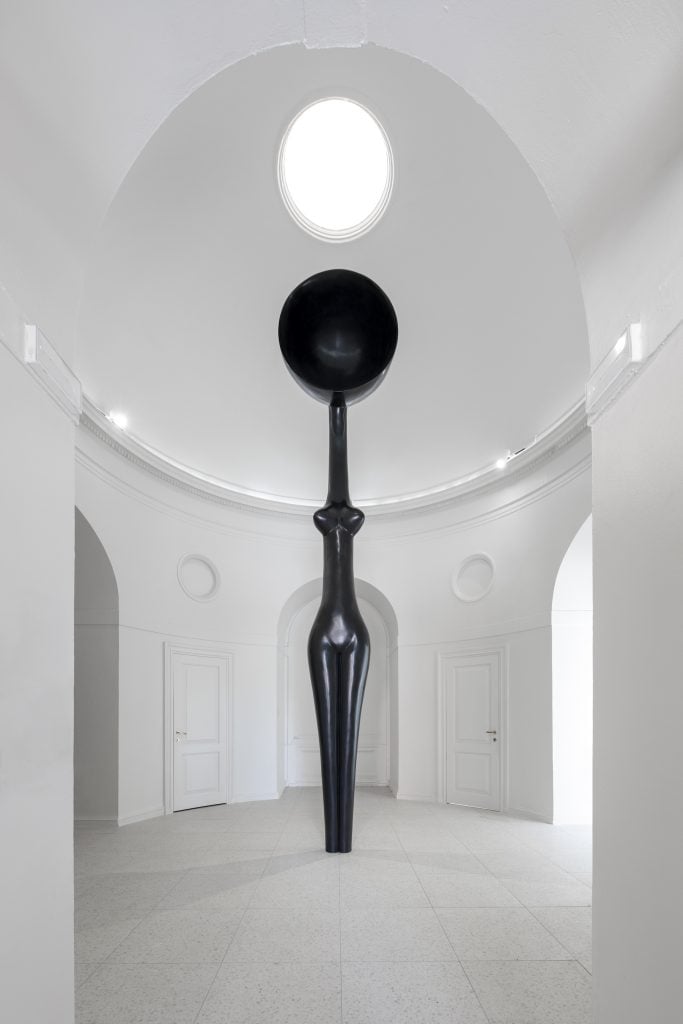
Simone Leigh, Sentinel (2022). Photo by Timothy Schenck, courtesy the artist and Matthew Marks Gallery, © Simone Leigh
The list of women artists who have joined the NGA’s holdings in recent years is impressive. Over the summer, the museum announced the acquisition of Sentinel (2022), one of the sculptures Simone Leigh created for last year’s Venice Biennale,
Other high-profile recent acquisitions by women have included the museum’s first piece by an early modern Italian woman artist—Lavinia Fontana’s Portrait of Lucia Bonasoni Garzoni (1590)—and its earliest sculpture by a woman, a 1680 Virgin and Child statue by Spain’s Luisa Roldán.
The institution also now boasts a still life by Italian Renaissance painter Fede Galizia (ca. 1625–30), and the only known work by Caterina Angela Pierozzi, a little-known Florentine painter active from about 1670 to 1690. The NGA purchased both works from Conalghi Gallery in London, which had offered them at TEFAF Maastricht in June 2022, according to La Tribune.
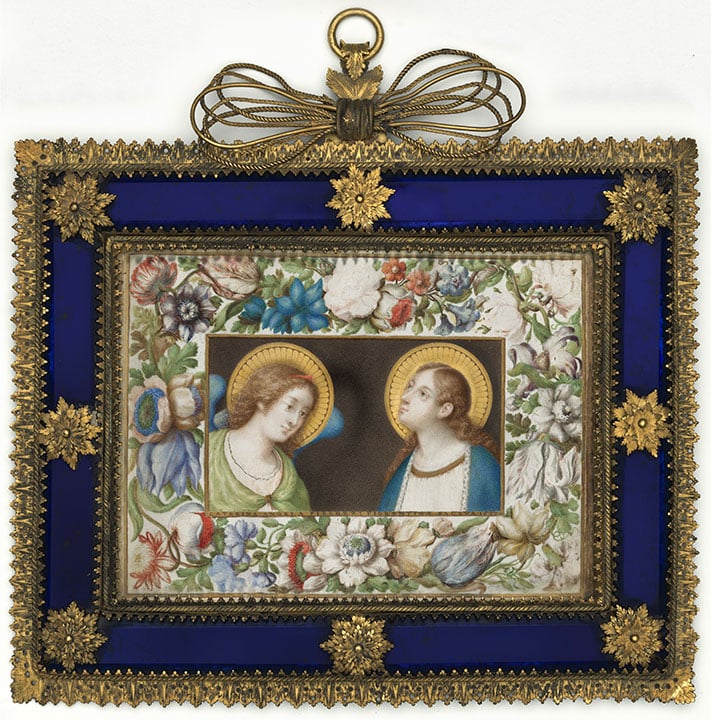
Caterina Angela Pierozzi, Annunciation 1677. Collection of the National Gallery of Art, Washington, D.C.
Among more recent figures, the NGA has also snapped up works by Carmen Herrera, Kiki Kogelnik, and Faith Ringgold.
In fact, since Kaywin Feldman became the museum’s first female director in 2019, the percentage of new acquisitions representing works by women and non-binary artists has risen from 12 percent to 32 percent in 2022. (The increase for BIPOC and internationally diverse artists has been even better, from 12 percent in 2018 to 36 percent in 2022.)
Last November, the museum announced the establishment of the Victoria P. Sant Fund for Women Artists, a new endowment fund dedicated to the acquisition of art by women. (The funds have not been used yet.)
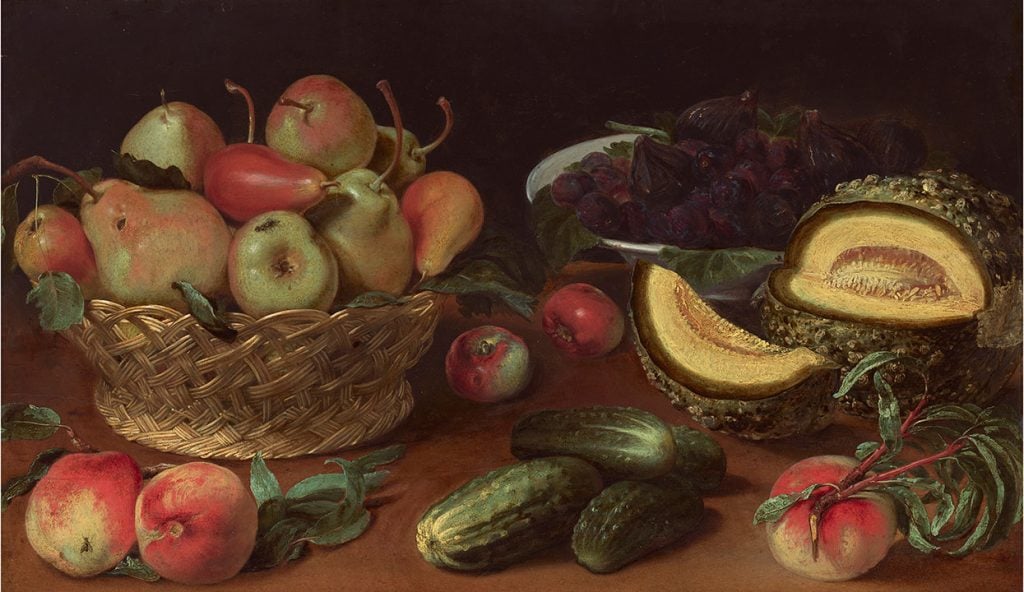
Fede Galizia, Still Life of Apples, Pears, Cucumbers, Figs, and a Melon (ca. 1625–30). Collection of the National Gallery of Art, Washington, D.C. Gift of Funds from Roger Sant, Patrons’ Permanent Fund, and Gift of Funds from Deborah Burkland.
Despite this progress, women artists currently make up only 8 percent of the total NGA collection.”This inadequate indicator requires that we urgently pursue works by women artists across all of our collecting areas,” Ramos said.
With those priorities in mind, the museum expects to soon be able to announce other important acquisitions by female artists Loló Soldevilla, Belkis Ayón, and Remedios Varo.
More Trending Stories:
A Shipwreck Off the Coast of Colombia May Hold $20 Billion Worth of Treasure
Hot! How a Backyard Photographer Captured Some of the Most Detailed Images of the Sun
Chinese Artist Chen Ke Celebrates the Women of Bauhaus in a Colorful, Mixed-Media Paris Debut
A Centuries-Spanning Exhibition Investigates the Age-Old Lure of Money
Meet the Woman Behind ‘Weird Medieval Guys,’ the Internet Hit Mining Odd Art From the Middle Ages
Conservators Find a ‘Monstrous Figure’ Hidden in an 18th-Century Joshua Reynolds Painting
A First-Class Dinner Menu Salvaged From the Titanic Makes Waves at Auction
The Louvre Seeks Donations to Stop an American Museum From Acquiring a French Masterpiece